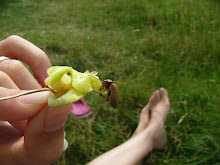How to Teach Phonics
Building Spelling and Pronunciation Through Games and Activities
by Todd Hess
1. Why teach phonics?
An. When a person can use correct pronunciation for a word or a sentence, then successful communication is possible.
Example: This guy is falling.
2. What are phonemes?
An. Phonemes are different sounds within a language.
3. Phonemic transcription:
1) There are 26 letters in the English alphabet.
2) There are 21 consonants.
3) 24 consonant sounds.
4) 5 vowels.
5) 20 vowels sounds.
There are totally 44 phonemes in English. (24 + 20)
4. What difficulties that individual learners have?
1) Lack of a 1 to 1 relation between spelling and pronunciation in English.
2) Alphabet & Phonics are overlapped.
3) There are sounds and combinations of sounds that are in Chinese that are not in English.
4) English has stress and tones (for not only words but also sentences).
5) Other: Pronunciation teaching is often neglected. It’s usually not part of the curriculum/program/lesson planning.
5. Teachers of pronunciation need:
1) A good understanding of theoretical knowledge
2) Practical classroom skills
3) Acess to good ideas for classroom teaching
6. Techniques and Activities
1) It’s more important to teach the final sound of a letter not the initial sound. Eg. Mom à teach m sound as /m/ instead of /mə/
2) Point out the difference between voiced and unvoiced sounds. Eg. /t/ & /d/
3) Deductive Approach and Productive Approach
7. More Techniques:
1) For better pronunciation: I say. You say
2) Best done before they see the written form of the new language.
3) Drilling:
a. Choral drilling: Help build confident.
b. One-on-one drilling: allow Ts to see how each S is doing.
c. Chain Driving: by sentence or by word
d. Front Chaining: sp, spoo, sppok, pooki, pokiest (Break it into ridicules.)
e. Back Chain: a fest., need a fest, Jake needs a fest.
f. Substitution drilling: change only one phonemes. (Eg. nat, nut, not, nit..)
4) Mimal pairs: words or utterances which differ by only one phoneme. They show the phonemic principle of changing just one sound can lead to the change of meaning. (Eg. cap & cape, goat & coat)
5) Listening Activities (Respective method)
6) Reading: circle all the “ai” with a yellow marker, all the “ay with a blue marker….
7) Recording the students: a good way for Ss to find what they are doing wrong.
7. Activities
1) Heads Down & Arms Up
2) Stand Up and Be Counted
3) Back Spelling
4) Eat your words
5) Make a Poem
I have learnt a couple new concepts from this workshop, and many useful techniques and activities. I have applied some of them in my teaching, and I found there were games more suitable for elder kids that didn’t work as well for younger kids (or vice versa).


0 Comments:
Post a Comment
<< Home